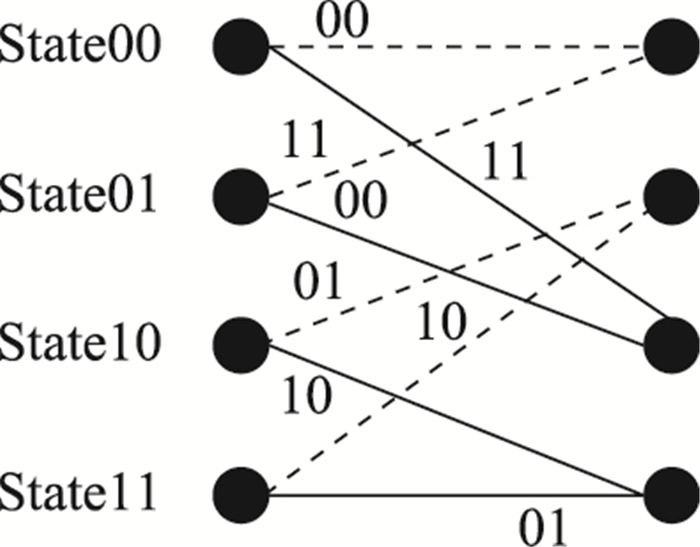| 1 |
ANANDAN V K, PRADEEP K C, SATYANARAYANA S N V, et al. Multiple satellite telemetry and tracking system[C]//Proc.of the IEEE Indian Conference on Antennas and Propogation, 2018.
|
| 2 |
蒋罗婷. 国外小卫星测控通信网发展现状和趋势[J]. 电讯技术, 2017, 57 (11): 1341- 1348.
doi: 10.3969/j.issn.1001-893x.2017.11.020
|
|
JIANG L T . Development and trends of foreign TT & C and communication networks for small satellites[J]. Telecommunication Engineering, 2017, 57 (11): 1341- 1348.
doi: 10.3969/j.issn.1001-893x.2017.11.020
|
| 3 |
蒋怡婷, 朱立东.卫星通信系统中的非正交多址技术[C]//第十五届卫星通信学术年会论文集, 2019: 201-208.
|
|
JIANG Y T, ZHU L D. Non-orthogonal multiple access technology in satellite communication systems[C]//Proc.of the 15th Annual Conference on Satellite Communications, 2019: 201-208.
|
| 4 |
NIKOPOUR H, BALIGH H. Sparse code multiple access[C]//Proc.of the IEEE 24th Annual International Symposium on Personal, Indoor, and Mobile Radio Communications, 2013: 332-336.
|
| 5 |
MA X, ZHANG J Y, YU Z Y, et al. A PAPR-reduction SCMA codebook design for satellite communication systems[C]//Proc.of the 11th International Conference on Wireless Communications and Signal Processing, 2019: 1-6.
|
| 6 |
JIANG C X , WANG Y F . An uplink SCMA codebook design combining probabilistic shaping and geometric shaping[J]. IEEE Access, 2020, 8, 76726- 76736.
doi: 10.1109/ACCESS.2020.2989448
|
| 7 |
PRABHAVATHI BHAI J, NAIDU RAMA K. SCMA with new codebook design[C]//Proc.of the 9th International Conference on Advances in Computing and Communication, 2019: 169-174.
|
| 8 |
PENG X, PAN Z, LAI K, et al. Low complexity receiver of sparse code multiple access based on dynamic trellis[C]//Proc.of the IET Communications, 2020: 1420-1427.
|
| 9 |
MU H , MA Z , ALHAJI M , et al. A fixed low complexity me-ssage pass algorithm detector for up-link SCMA system[J]. IEEE Wireless Communications Letters, 2017, 4 (6): 585- 588.
|
| 10 |
YANG L , MA X Y , SIU Y M . Low complexity MPA detector based on sphere decoding for SCMA[J]. IEEE Communications Letters, 2017, PP (99): 1- 1.
|
| 11 |
BAYESTEH A, NIKOPOUR H, TAHERZADEH M, et al. Low complexity techniques for SCMA detection[C]//Proc.of the IEEE Globecom Workshops, 2015.
|
| 12 |
王志斌.卷积码译码次优路径算法在第三代移动通信中的应用[D].西安: 西安电子科技大学, 2009.
|
|
WANG Z B. The application of PLVA to the third generation mobile communication system[D]. Xi'an: Xidian University, 2009.
|
| 13 |
FENG S, YANG J, KWON H M. Blind relay network with Viterbi detection[C]//Proc.of the IEEE Military Communications Conference, 2014: 525-530.
|
| 14 |
ZHAO X Y, LI H, WANG X Q. A high performance multi-standard Viterbi decoder[C]//Proc.of the IEEE 7th International Conference on Electronics Information and Emergency Communication, 2017.
|
| 15 |
SILVA B F D , RUYET D L , UCHOA-FILHO B F . Thres-hold-based edge selection MPA for SCMA[J]. IEEE Trans.on Vehicular Technology, 2020, 69 (3): 2957- 2966.
doi: 10.1109/TVT.2020.2966333
|
| 16 |
DU Y , DONG B H , CHEN Z , et al. Shuffled multi-user detection schemes for uplink sparse code multiple access systems[J]. IEEE Communications Letters, 2016, 20 (6): 1231- 1234.
doi: 10.1109/LCOMM.2016.2551742
|
| 17 |
WEI F , CHEN W . Low complexity iterative receiver design for sparse code multiple access[J]. IEEE Trans.on Communications, 2016, 65 (2): 621- 634.
|
| 18 |
梁燕, 余贝, 童开蒙. 高斯信道下SCMA简易码本设计[J]. 计算机应用研究, 2017, 34 (9): 2744- 2747, 2752.
doi: 10.3969/j.issn.1001-3695.2017.09.040
|
|
LIANG Y , YU B , TONG K M . Simple SCMA code book design in AWGN channels[J]. Computer Application Research, 2017, 34 (9): 2744- 2747, 2752.
doi: 10.3969/j.issn.1001-3695.2017.09.040
|
| 19 |
PRABHAVATHI B J, RAMA N K. SCMA with new codebook design[C]//Proc.of the 9th International Conference on Advances in Computing and Communication, 2019: 169-174.
|
| 20 |
SUN W C , SU Y C , UENG Y L , et al. An LDPC-coded SCMA receiver with multi-user iterative detection and decoding[J]. IEEE Trans.on Circuits and Systems I: Regular Papers, 2019, 66 (9): 3571- 3584.
doi: 10.1109/TCSI.2019.2925826
|
| 21 |
HAN K, ZHANG Z, HU J, et al. A high performance joint detection and decoding scheme for LDPC coded SCMA system[C]//Proc.of the IEEE Globecom Workshops, 2016.
|
| 22 |
ZHOU D, LIU H, WEN K, et al. A novel scheme of polar-coded SCMA OFDM analogue radio-over-fiber for C-RAN optical fronthaul[C]//Proc.of the 6th International Conference on Information Science and Control Engineering, 2019: 974-977.
|
| 23 |
LIANG K, FENG B W, JIAO J, et al. Design on polarization weight-based polar coded SCMA system over fading channels[C]//Proc.of the 90th Vehicular Technology Conference, 2019.
|
| 24 |
ZHANG M C, LI D, YANG Y J. Resource allocation for SCMA based D2D under laid cellular system[C]//Proc.of the 2nd International Conference on Electronics Technology, 2019: 56-60.
|
| 25 |
MIAO J S, HU X J, ZHAO Z M. A low complexity multiuser detection scheme with dynamic factor graph for uplink SCMA systems[C]//Proc.of the IEEE/CIC International Conference on Communications, 2019: 846-851.
|
| 26 |
WU Y Q, ZHANG S Q, CHEN Y, Iterative multiuser receiver in sparse code multiple access system[C]//Proc.of the IEEE International Conference on Communications, 2015: 2918-2923.
|
 ), Chunyang LIU1(
), Chunyang LIU1( ), Li XU2(
), Li XU2( ), Xia LUO2(
), Xia LUO2( )
)



















